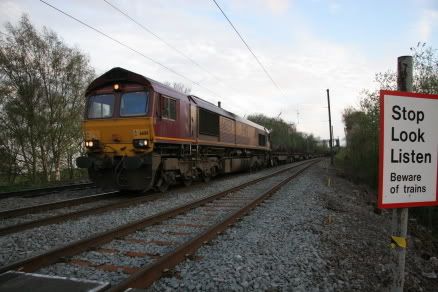by UKrailwayman
Having recently bought a DSLR, I have been taking some photographs from some local places.
Sadly the weather, as usual, has not been so good, also I am still learning how to use the camera, so please bear with me.
This is near a place called Barnt Green, which is at the top of the famous Lickey Bank. This is a 1 in 37 bank on the famous former Midland Railway route from Derby to Bristol (via Birmingham).
This is a class 60 locomotive on a steel train from Sunthorpe in Lincolnshire to South Wales.
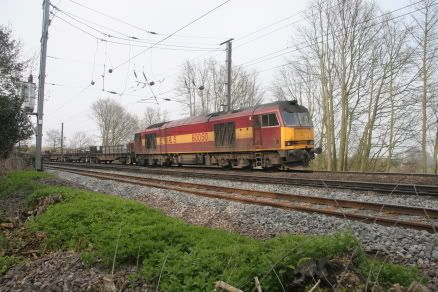
The next shot is of a Class 323 EMU operating a suburban service from Lichfield to Redditch

Barnt Green station still retains its old Midland Railway footbridge, under which the 1630 from Hereford to Nottingham is passing at about 70 mph.
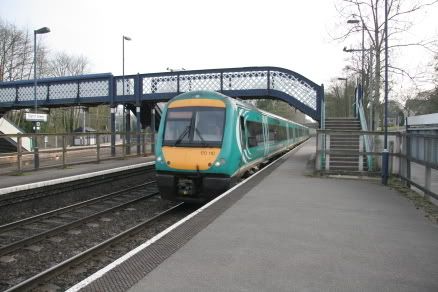
Moving to the main station in Birmingham, which is New Street, we find a preserved diesel electric locomotive on a special enthusiasts special last Sat night 22nd April.
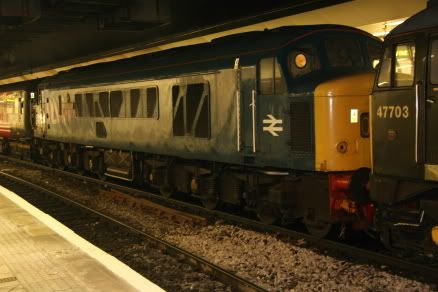
Finally we move to Rugby in Warwickshire, on the main West Coast main Line from London to Scotland, where under a grey sky a Class 60 locomotive passes on an aggregates train.
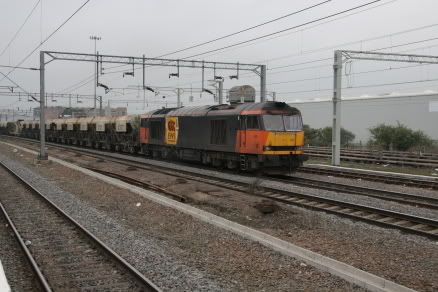
Sadly the weather, as usual, has not been so good, also I am still learning how to use the camera, so please bear with me.
This is near a place called Barnt Green, which is at the top of the famous Lickey Bank. This is a 1 in 37 bank on the famous former Midland Railway route from Derby to Bristol (via Birmingham).
This is a class 60 locomotive on a steel train from Sunthorpe in Lincolnshire to South Wales.

The next shot is of a Class 323 EMU operating a suburban service from Lichfield to Redditch

Barnt Green station still retains its old Midland Railway footbridge, under which the 1630 from Hereford to Nottingham is passing at about 70 mph.

Moving to the main station in Birmingham, which is New Street, we find a preserved diesel electric locomotive on a special enthusiasts special last Sat night 22nd April.

Finally we move to Rugby in Warwickshire, on the main West Coast main Line from London to Scotland, where under a grey sky a Class 60 locomotive passes on an aggregates train.



